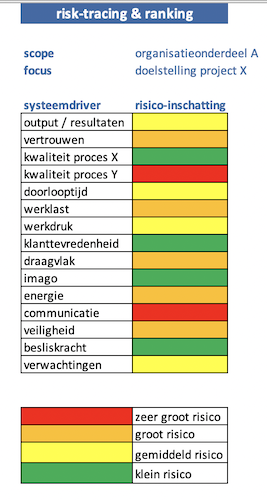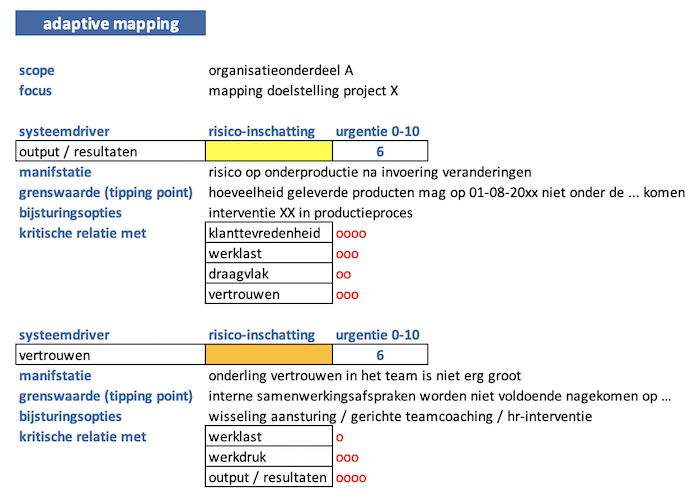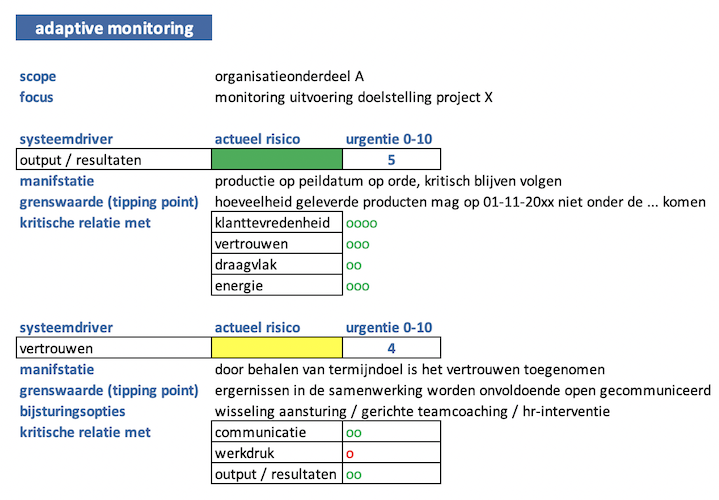BROADVIEW | EXE!
noting is certain, everything is changingfrom old to new
A system dynamics analysis with explore! provides a hair-trigger picture of how the issue fits together and what actions and decisions have the best chance of sustainable success.
However, there is always the risk that those new ideas and plans will slip into old patterns and customs.
To create the best chances for results that hold up over time, so-called adaptive implementation is the best option. Adaptive stands for “adapting to changing circumstances,” and therein lies exactly the crux!
After all, implementation is done over time, and time does not stand still. What seemed like a good elaboration at the outset may soon be overtaken by time. Also, every action, intended or unintended, affects other actions and aspects in the system. In short, a continuous circular process in which each step provides new information.
adaptive implementation with EXE!
The trick is to translate this information into adjustments or adjustments in time. Indeed, how powerful would it be if you could estimate these possible interventions in advance and include them in planning?
And you could also see in real time from other organizational units how they adaptively assess their risks and opportunities?
To make this entire process possible, we developed exe! A combination of methodology and technology that makes adaptive implementation manageable, accessible, communicative and therefore highly successful for all involved.
EXE! in 3 steps.
1. establishing the system drivers
The analysis with explore provides not only solution directions but also the essential information for successful implementation in practice: the system drivers, driving forces that can give an initiative wings, but can also mercilessly kill it.
In this first step, we determine the system drivers for each initiative. We bring them together in a central measurement tool.
Examples of system drivers: outputs/results, trust, quality of a given process, lead time, workload, customer satisfaction, image, support, energy, decision power, etc.
The set of system drivers always consists of both hard and soft elements, so that both structure and culture in relation to each other remain in constant view.

2. furnishing
Tailored to the implementation, we choose a combination of analog and digital recording and communication tools. Tools, which provide ample scope for adaptive design of the process from head to tail, from planning tools to crowdsourcing.
These tools are set up centrally and made accessible to every stakeholder. A monitoring team is then assembled to manage this central database and to monitor and encourage communication.
3. risk-rating
After establishing goals and actions, tasks, places and responsibilities, timelines, conditions and resources, we take the first adaptive step, risk-rating.
For each item in the schedule, the team estimates for each system driver, the risks and opportunities. For example, one driver may be assessed as high risk by the team, while another item may come under pressure. Of course, this involves continuous consideration of interrelationships, system operations.
Then, for the system divers with a high assessed risk, the team also describes a so-called tipping point: setting a limit in time, a concrete signal that becomes visible in practice before the damage becomes significant.
These estimation of each team are digitally accessible within the organization to every person involved, as well as the estimation of what items the team thinks it will need in realizing the items.


4. tipping points
Then, for the system divers with a high assessed risk, the team also describes a so-called tipping point: setting a limit in time, a concrete signal that becomes visible in practice before the damage becomes significant.
These estimation of each team are digitally accessible within the organization to every person involved, as well as the estimation of what items the team thinks it will need in realizing the items.
5. implementation & monitoring
Risk-rating is followed by implementation. Realization is closely monitored by each organizational unit involved using exe! and information is shared organization-wide.
The team tracks the implementation of the items and takes the risk-rating as a starting point for monitoring its own implementation in relation to the organization-wide implementation.

Through smart central digital storage is continuously in view:
- Which system drivers are positively or negatively affected by a specific action;
- on the basis of tipping points: which limits in implementation practice are at risk of being reached or have already been reached/exceeded
- Whether and to what extent the implementation of items by other organizational units, affects the implementation of their own items;
- What changes should be made to the risk rating and tipping points / limits;
- what information should go to what places in the organization (real time); who, based on this information, should act.
The proof of the pudding is in the eating
Our ambitions are high, as are our promises. To discover the reality behind our marketing, we invite you to thoroughly test our promises:
choose a complex situation from your own practice. Contact us and we will pick up that issue live at your table (or via Skype) and show you in less than an hour how we collectively explore new possibilities!
